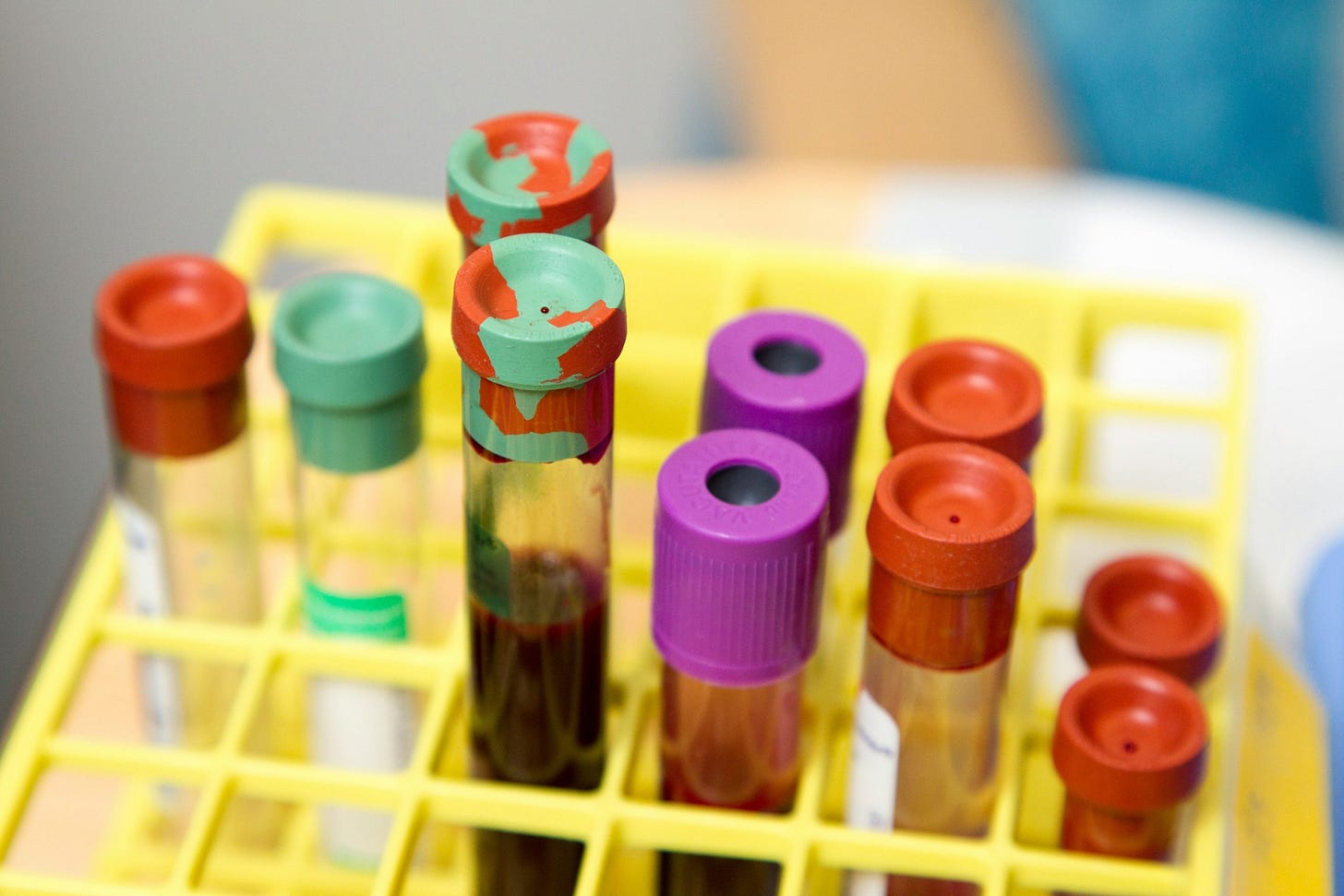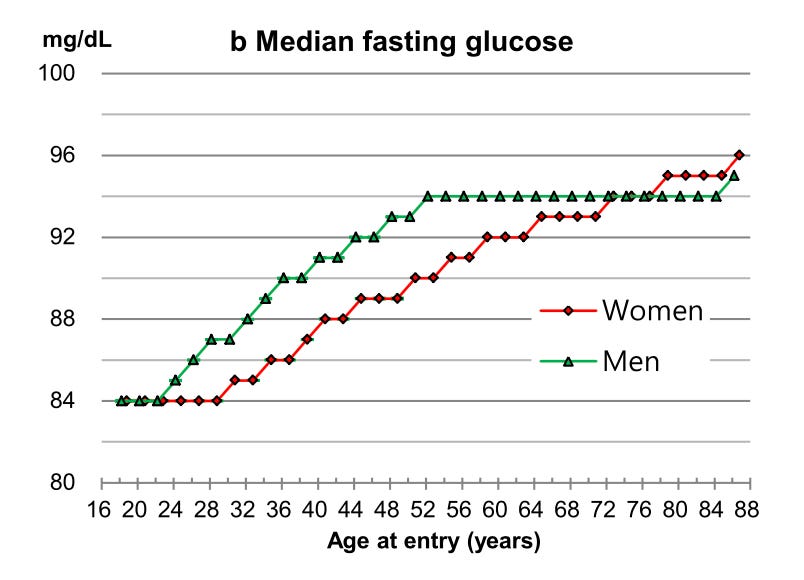Beyond Biomarkers
Why Habits Matter More for Longevity
Walking adds nearly a decade to life expectancy yet barely moves the needle on common biomarkers. This striking disconnect highlights a crucial truth about longevity: our obsession with blood tests and biological markers may lead us astray from what matters.
The Disconnect Between Impact and Measurement
Consider this: The most potent longevity interventions we know have minimal impact on standard biomarkers:
Walking (12,000 steps daily) adds up to 10 years to life expectancy
The "A-Tier" trio of aerobic exercise, HIIT, and strength training can add another 12 years
Together, these habits could extend a 40-year-old's life by over two decades
Yet these profound life-extending activities barely register in standard blood tests.
The Problem with Blood Biomarkers
Blood tests within normal ranges tell us surprisingly little about mortality risk. Take fasting glucose as a perfect example: Look at how mortality risk (measured by hazard ratio) changes with glucose levels:
Between 75-100 mg/dL – the "normal" range – the hazard ratio stays flat around 1.0
Below 75 mg/dL, risk starts climbing
Above 100 mg/dL, the risk rises steadily, reaching 2.8 times normal at 250 mg/dL
But here's where it gets interesting: Fasting glucose naturally increases with age, rising from about 84 mg/dL in your 20s to 94-96 mg/dL in your 80s. You might be tempted to celebrate if you maintain the glucose levels "of a 20-year-old" through diet and exercise. However, since any glucose level between 75-100 mg/dL shows the same mortality risk, having the glucose level of a younger person doesn't actually predict a longer life1.
This pattern repeats across many biomarkers – they only predict problems when significantly outside normal ranges. Within normal limits, they tell us little about longevity. It's like a check engine light: useful when it indicates a problem, but not meaningful for optimizing performance when everything's working fine.
The Trap of Measurement
Attempting to optimize biomarkers violates what economists call Goodhart's Law: when a measure becomes a target, it ceases to be a good measure. Consider lymphocytes, white blood cells that typically decrease with age. While younger people generally have higher counts, artificially raising your lymphocyte count (say, by repeatedly exposing yourself to infections) would likely harm rather than help longevity.
Better Metrics Exist
More practical health metrics to track include:
Resting Heart Rate
Heart Rate Variability
VO2 Max
Grip Strength
These measurements respond directly to beneficial habits, provide actionable feedback, and connect clearly to mortality risk.
Epigenetic Tests: A New Layer of Complexity
Epigenetic age tests, which measure chemical modifications to DNA, have generated excitement in longevity circles. The most responsive of these, DunedinPACE, has spawned a "Rejuvenation Leaderboard," where health influencers compete to demonstrate biological age reversal. My score of 0.8 (lower is better) puts me in roughly the top 16% of tests – an impressive number that gives no information about which actions I'm doing that extend life.
At $500 per test with three tests required to qualify for the leaderboard, it's an expensive way to quantify health optimization – more suited for longevity bloggers seeking credibility than everyday health seekers.
Recent research found these tests respond most strongly to medications in sick populations - like anti-inflammatory drugs in arthritis patients. Meanwhile, proven longevity interventions like walking and strength training barely register2. Even when the tests suggest improvement, we lack evidence that changing these markers extends life.
If your biological age tests high, the recommendation is "be healthy." If it tests low, you get bragging rights but no helpful guidance. Most concerning, these tests don't reliably show benefits from the interventions we know extend life.
The Habit Revolution
The evidence points to a simple truth: focus on habits, not numbers. Instead of chasing perfect blood work, prioritize the fundamentals that demonstrably extend life:
Walk 10,000+ steps daily
Perform weekly strength training
Include short bursts of intensity in your exercise
These activities might not dramatically shift your biomarkers but will dramatically increase your lifespan. The most potent interventions for extending life don't require regular blood tests or complex biomarker tracking—they require shoes for walking, stairs for climbing, and the consistency to make these activities part of daily life.
Ready to Hack Your Lifestyle and Live Longer? Subscribe Now and start your journey to a longer, healthier life!
Discover your true biological age with our FREE Longevity Calculator and unlock personalized biohacks to optimize your health and well-being.






